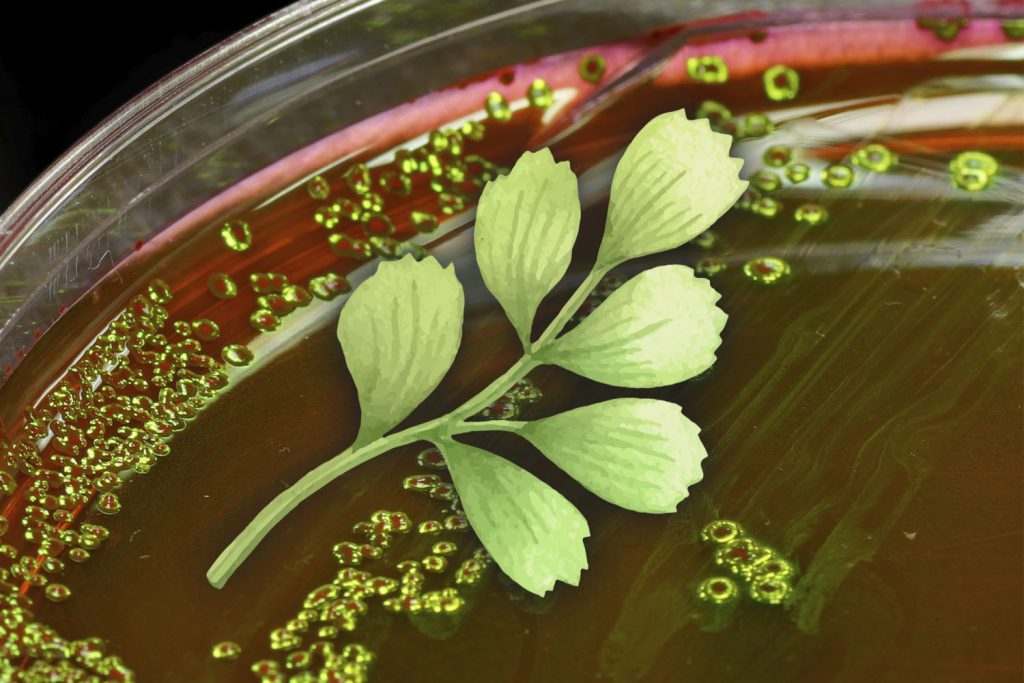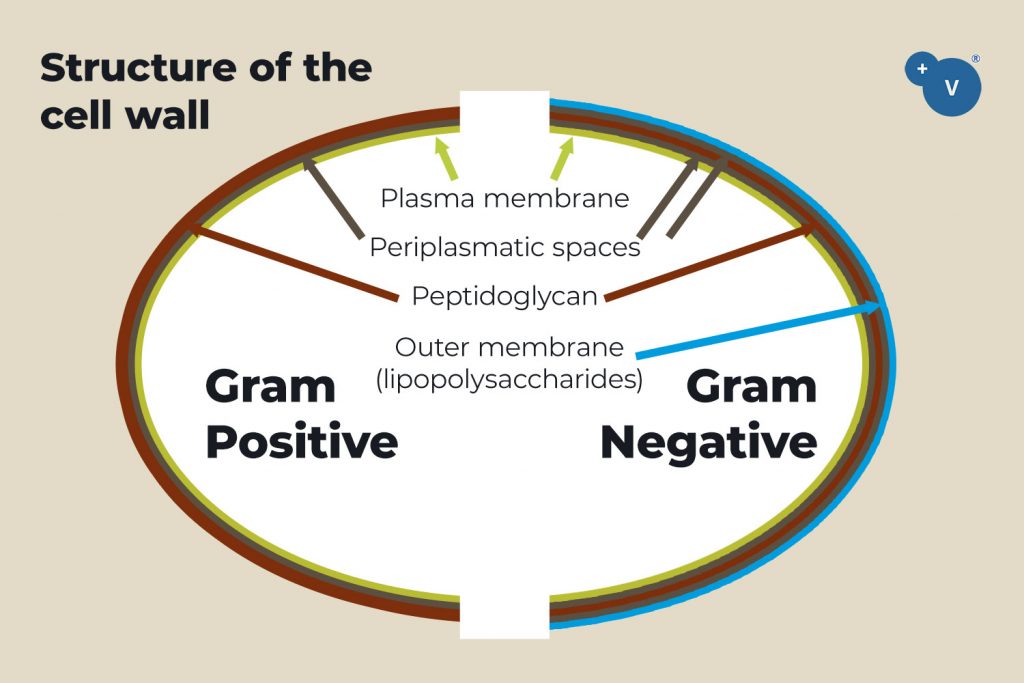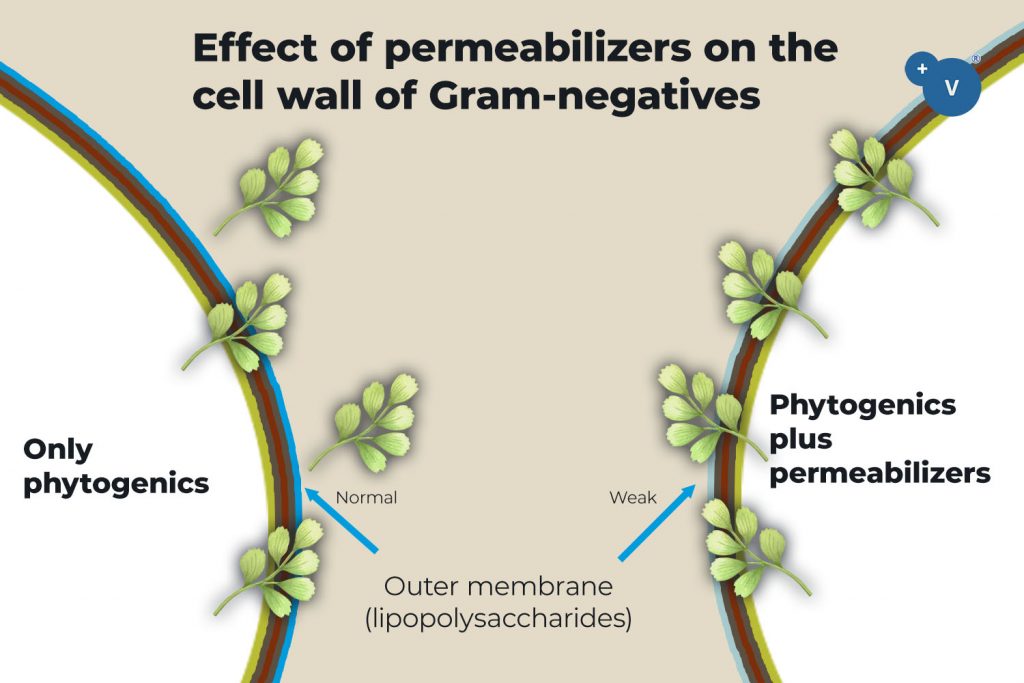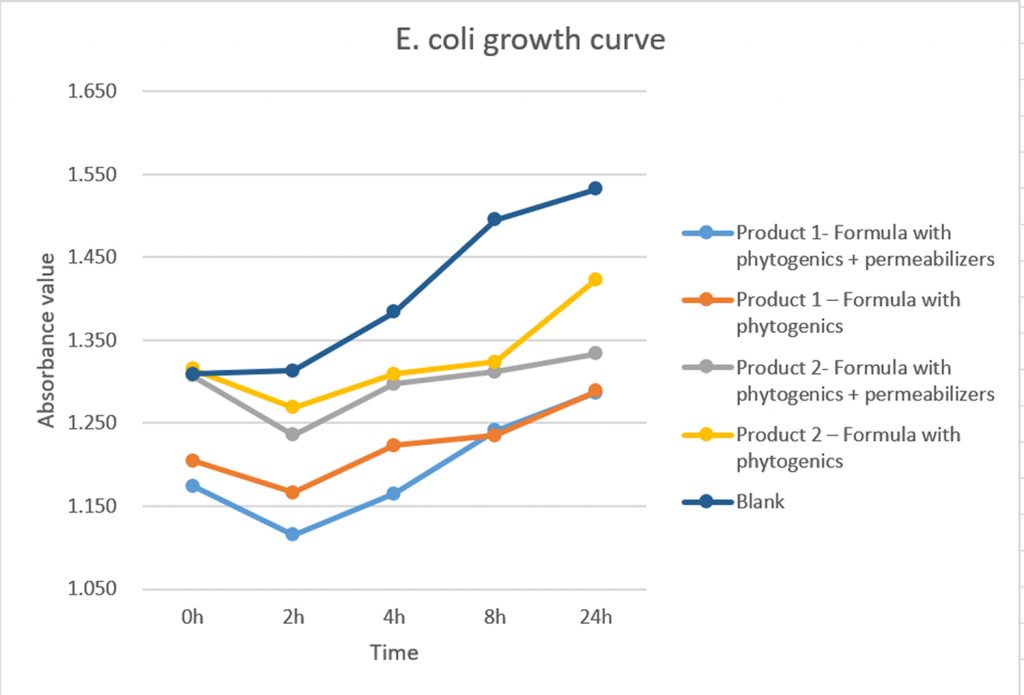03 Dec Making phytogenics more effective against Gram-negative bacteria: use of permeabilizers

In recent years, phytogenics have been used as substitutes of antibiotic growth promoters in the poultry and livestock industries. The beneficial effects of phytogenics are attributed to their antimicrobial, antioxidant and anti-inflammatory properties.
We discussed the antimicrobial mechanism of action of phytogenics in this article. As antimicrobials, they generally exhibit a broad spectrum of action, although they are considered to be more effective against Gram-positive than Gram-negative bacteria.
The effectiveness of phytogenics against Gram-negatives can be enhanced by combining them with organic acids, as they have additive effect. Another solution, much more effective, is formulating products that include phytogenics and permeabilizers, as we at PlusVet Animal Health do in PhytoLogist©, our new product line.
Gram-negative: a challenge for antimicrobials
Gram-negative bacteria cause many types of infections in farm animals. Furthermore, several species, including Escherichia coli and Salmonella sp, are common causes of foodborne diseases.
As it is well known, Gram-positive and Gram-negative bacteria have a different structure of the cell wall. In Gram-positive bacteria, the plasma membrane is covered by a thick cell wall layer consisting of peptidoglycan. Hydrophobic molecules, such as phytogenics, can penetrate easily the layer of peptidoglycan and exert their antimicrobial effects on the bacteria
On the other hand, in Gram-negative bacteria the peptidoglycan layer is thinner and it is covered by a thick layer made of lipopolysaccharides called outer membrane. The outer membrane is hydrophilic so it is difficult for phytogenics and other hydrophobic antimicrobials to penetrate, making Gram-negative bacteria more resistant to phytogenics.

Weakening the outer membrane with permeabilizers
It is possible to weaken the outer membrane of the Gram-negative bacteria with the use of certain substances called permeabilizers.
Permeabilizers act by disintegrating the lipopolysaccharide layer and increasing the permeability of the outer membrane to hydrophobic agents like phytogenics. Permeabilizers themselves may not be antimicrobial, but they potentiate the activity of hydrophobic antimicrobials, acting synergistically.

Demonstrating the in vitro activity of permeabilizers in two products manufactured by PlusVet Animal Health
The permeabilizing activity of a certain compound against Gram-negative bacteria can be assessed by monitoring the growth inhibition in liquid bacterial cultures.
In this experiment, carried out in the laboratory of PlusVet Animal Health in October 2019, we tested the antimicrobial effects of two products containing phytogenics or phytogenics plus permeabilizers on the growth curve of E.coli.
Materials
Strain: E.coli ATCC25922. A dilution is prepared, containing 3*106cfu /mL.
Products to test:
- Product 1- Formula with phytogenics
- Product 1- Formula with phytogenics + permeabilizers
- Product 2- Formula with phytogenics
- Product 2- Formula with phytogenics + permeabilizers
- Blank control (water)
Brain heart broth medium
Preparation of dilutions
Prepare a 50 ml solution of each product and formula to test using brain heart broth as a medium. Distilled water is used to substitute the amount of product to test in the blank control. Solutions are sterilized in autoclave.
The concentration of formulas to test is such that only mildly inhibit the growth of bacteria, in order to be able to measure the growth curve of E.coli over time.
50 mL of bacterial solution containing 3*106cfu /mL of E.coli is mixed with 50 mL of each test solution. The mixtures are cultured at 37℃.
Measuring the growth curve of E.coli
At 0, 4, 8 and 24 h, take 5 ml of the mixtures and put into into a centrifuge tube and centrifuge at 5000 rpm for 5 min. Discard the supernatant, add 5 ml of physiological saline serum to the residue, mix well to completely dissolve, and measure the absorbance at 560 nm.
A higher absorbance is related to a higher density of bacteria in the tube.
Results

It can be observed that, in products 1 and 2, the formulas with phytogenics plus permeabilizers (lower absorbance) inhibit the growth of E.coli more effectively than the formulas with only phytogenics (higher absorbance).
Conclusions
It can be concluded that adding permeabilizers to the formulas containing phytogenics is a good way to make them more effective against Gram-negative bacteria and to ensure a broad spectrum of action.
Products containing phytogenics plus permeabilizers are effective replacers of antibiotic growth promoters.
Ms. GongPeihua, Technical Department

Certain health statements may not be applicable in your region.

